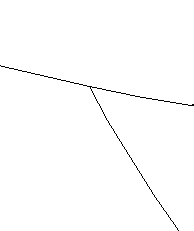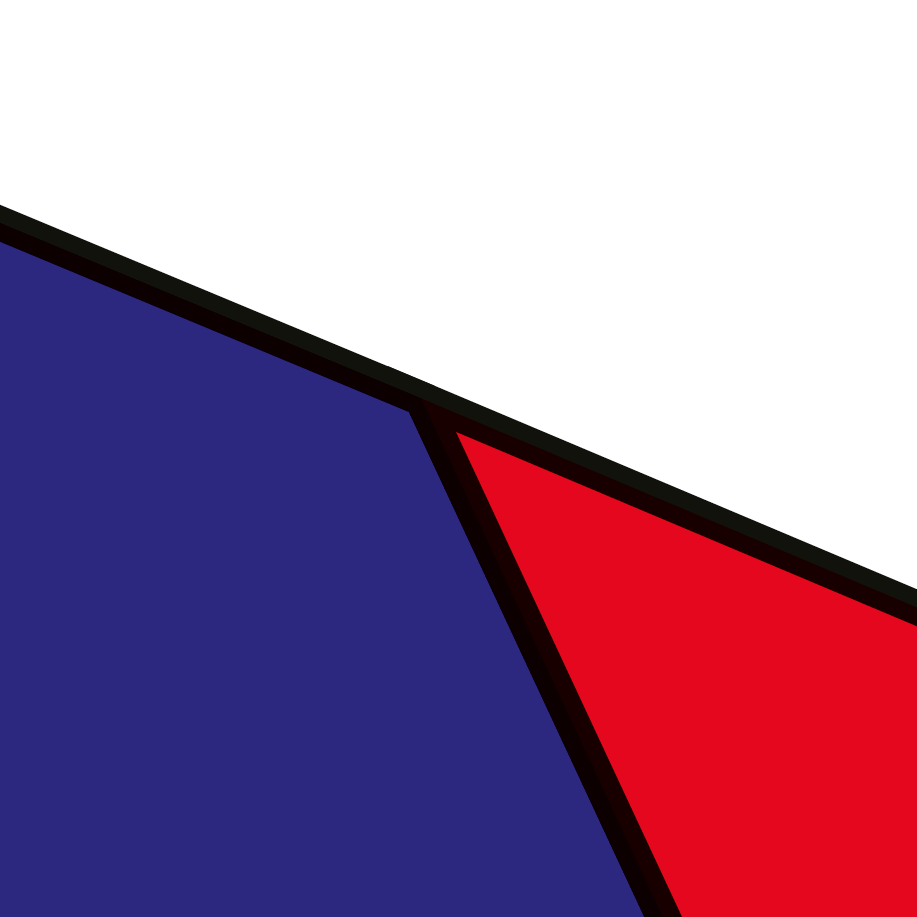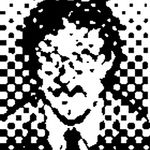Printer printing white line
Copy link to clipboard
Copied
Hi,
I've just had something of mine printed. I'm not sure why but there are some areas that have a very faint white line under it. Maybe I'm being nitpicky but I scrutinised everything on the print and there's a white line under certain paths or in a coloured section. I've had a look at what I can see on my file on my computer and I've stared too long at it to discern whether I'm making it up or not. In the image below, when printed, there is a white line underneath the paths that are surrounding the blue .

To give a bit of background, this image had live paint applied. The paths are black and the background is blue so not sure where the white could have come from. Also, as I said, some coloured live paint areas have a white stroke only near the outline of the black i.e. on the edges (see below one of the parts affected).

Before I blame the printing, is there anything that I did? I did not flatten transparency, I used PDF X-1a 2001 preset for PDF.
Was it the live paint?
I'm a bit frustrated at this! Any help is appreciated ![]()
Explore related tutorials & articles
Copy link to clipboard
Copied
You DID flatten transparency because PDF/X-1a forbids transparency. Therefore choosing that preset flattens transparency.
Are the white edges consistently on the same side of the black lines (for example always below or always above)?
Copy link to clipboard
Copied
Thanks for clarifying the transparency flattening!
It's pretty consistent- always under the horizontal lines, never on the vertical bits. You know what's up?
I think I might have applied a drop shadow but undid it so I don' think that issue remains.
Copy link to clipboard
Copied
If it's consistently in the same place AND if you can't see it in Acrobat no matter how much you zoom, it sounds like a perfectly normal amount of misalignment of the printer plates (are you printing to a press, with plates)? "Trapping" was invented to overcome this issue - are you familiar with trapping?
Copy link to clipboard
Copied
Oh wow thanks for that ![]()
No I have no idea what trapping is! Is there a setting for it in Illustrator?
Copy link to clipboard
Copied
sugarcoated293 wrote
Oh wow thanks for that
No I have no idea what trapping is! Is there a setting for it in Illustrator?
Yes, there is an option for that in Illustrator: in the Pathfinder menu > Trap...
But be carefull, if overdone, it can add visible lines to the printed result that can sometimes look worse than a slightly visible gap.
Copy link to clipboard
Copied
Thank you! If I do this, how do I know that this will work?
I guess I just want to know if I make another print, do I apply trapping to it myself straightaway or do I have to do a proof then trap then proof again? I want to minimise the number of steps as much as possible.
Copy link to clipboard
Copied
I'll tell you what trapping is about. As I don't use it myself, I'll leave it up to others to say what they use (or don't use).
Trapping starts from the idea that no printing press ever made has perfect alignment, and nobody wants to see white gaps. The idea is to overprint extra colour at the boundary between solid colour. This is a thin overprint of coloured or black lines, which you shouldn't see, but is wide enough to cover the gap.
There are four kinds of trapping at least
- manual trapping. You sit down and add these coloured or black lines.
- in-app trapping. Something which goes over the design and adds lines; perhaps an Illustrator plug-in.
- post app trapping. Something which adds trapping lines to PDF or PostScript files. Very specialist, often many thousands of dollars.
- in RIP trapping. Generally the preferred solution these days. The RIP (plate maker) automatically adds lines as needed. Paid for, of course, by the print shop.
Two groups of people might do trapping (and hence, do the investment of time or software):
- designers
- print operators
So, before spending money it may be worth talking to your print provider about trapping options.
Copy link to clipboard
Copied
Proofing won't show you whether your trapping will work (unless, or even if it's an on-press proof). It might show you if it's damaging. Trapping is something to improve with experience; it's a difficult professional task, not an on/off switch. Working with your printer is pretty crucial. Did you ask if they offer trapping?
Copy link to clipboard
Copied
@Test Screen Name: Thank you for your ongoing help! They don't offer trapping - so I should just use the Illustrator option? I might be misunderstanding but you said that I shouldn't print it to see whether it has worked yet I should work with my printer. But my printer will print these out and how should I see whether it has worked?
MichaelStephens: The outlines overlap by a bit (the black strokes) and the spaces in between these strokes have been filled with Live Paint. I suppose with your example of the yellow and magenta circle, my print is the "just touching the edges".
Copy link to clipboard
Copied
If the edges are just touching that may be contributing to the white lines. Even though it should work as it is, trying adding a very small stroke to one of the paths to see if that eliminates the white line where the two shapes touch.
Copy link to clipboard
Copied
Do the shapes in your artwork overlap or are they built so the edges touch?
That may sound weird, but it relates to the image below. The top part of the image can be built two different ways. The first way is with two circles and having the magenta circle placed above the yellow one so it's overlapping. The other method is to create a donut shape and have a circle that exactly fits inside the hole so the edge of the circle exactly touches the inner edge of the donut.

Copy link to clipboard
Copied
Let's try and be clearer.
1. You can't see whether trapping has worked by printing it to your own printer.
2. You MIGHT see whether trapping has failed by printing it to your own printer. For example if detail is lost or elements become unclear, you've overdone it.
3. You can't test whether trapping has worked by paying for a typical proof; this is printed on a special printer, NOT the press.
4. You MIGHT see whether trapping has worked by paying for a press proof. This should use the same press and inks. Of course, these are very expensive. Then again, you might not see problems that did appear on the press.
So, the only real test for trapping is to pay for a print run. If it doesn't work, you have to consider that your loss, not the printer's fault. Remember, it is caused by normal and unavoidable inaccuracies in placing plates. This will be different, and in different directions, on each press run. You may even get a lucky press run one time (alignment happens to be perfect), and not another.
Copy link to clipboard
Copied
I see!
Basically, I can't see whether it's work but I might see whether it's failed from printing at home.
Okay, I will have a think about what to do!
Thank you so much for you help ![]()
Copy link to clipboard
Copied
Personally, I'd avoid any printer that still holds the designer responsible for trapping. It's done automatically (configured by an expert) as part of a modern prepress workflow.
That said, this doesn't look hugely difficult to manually trap using overprinting (or Multiplied) strokes. Could you post a screenshot in Outline mode (View > Outline)?
Copy link to clipboard
Copied
Hi Danny,
For this part, it looks like this:

Copy link to clipboard
Copied
sugarcoated293 wrote
Hi Danny,
For this part, it looks like this:
Excellent. That makes the job easier. Select the objects with the black stroke applied, and in the attributes palette, make sure 'Overprint Stroke' is checked.
If you go to Preferences > Appearance of Black, set both options to 'accurately', and turn on View > Output Preview, you should be able to see the effect of this.
Copy link to clipboard
Copied
Thanks Danny. So I did what you asked and this is what it looks like now. Is this correct?

Copy link to clipboard
Copied
View > Overprint Preview, and post a screenshot. It should look something like below. It's barely noticeable, but the black stroke looks slightly darker on the side that overprints the blue and red fills.

Find more inspiration, events, and resources on the new Adobe Community
Explore Now
